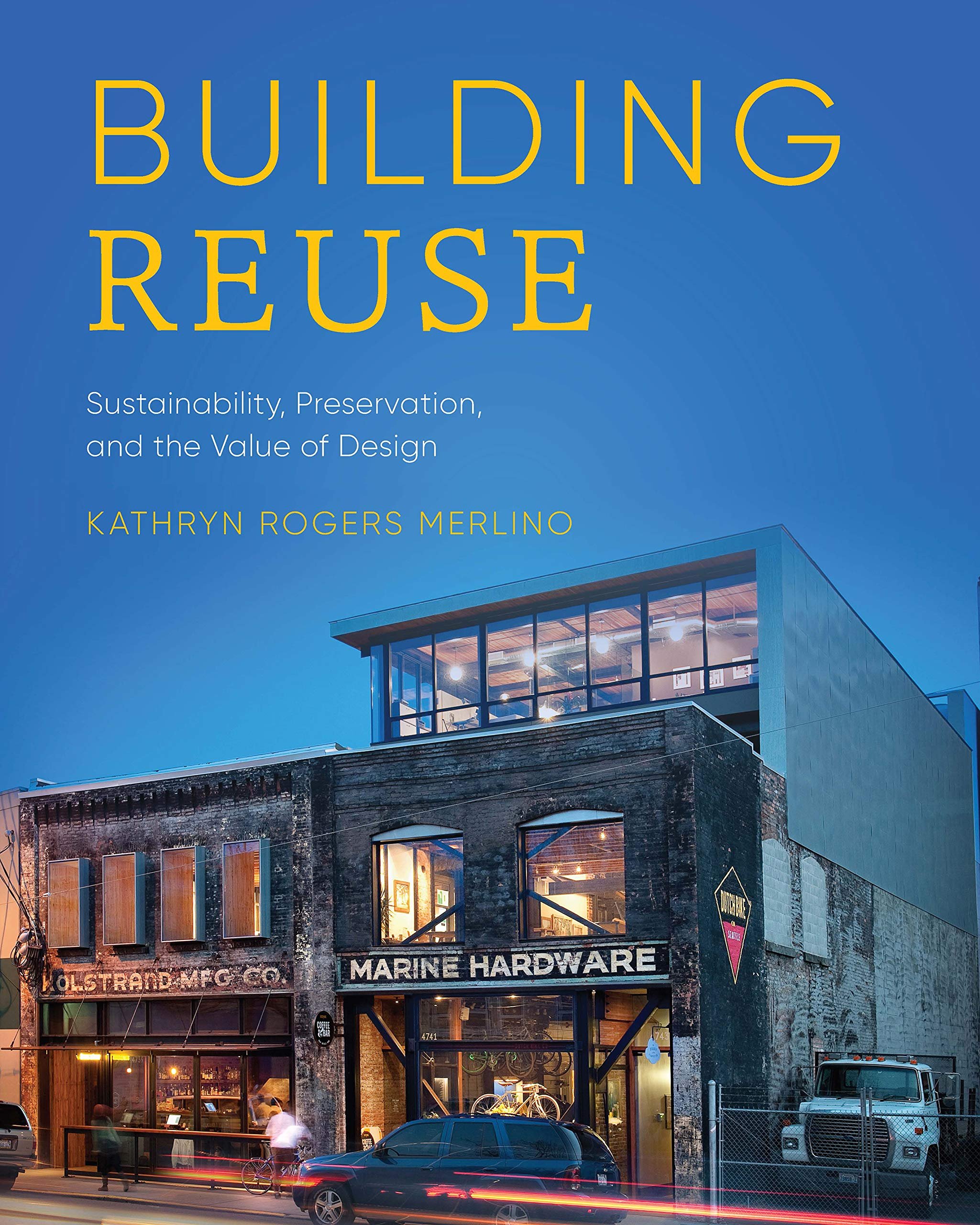Building Reuse: Sustainability, Preservation, and the Value of Design
The construction and operation of buildings is responsible for 41 percent of all primary energy use and 48 percent of all carbon emissions, and the impact of the demolition and removal of an older building can greatly diminish the advantages of adding green technologies to new construction. In Building Reuse, Kathryn Rogers Merlino makes an impassioned case that truly sustainable design requires reusing and reimagining existing buildings. Additionally, Merlino calls for a more expansive view of preservation that goes beyond keeping only the most distinctive structures based on their historical and cultural significance to embrace the creative reuse of even unremarkable buildings for their environmental value.
Building Reuse includes a compelling range of case studies—from a private home to an eighteen-story office building—all located in the Pacific Northwest, a region with a long history of sustainable design and urban growth policies that have made reuse projects feasible. Reusing existing buildings can be challenging to accomplish, but changing the way we think about environmentally conscious architecture has the potential to significantly reduce energy consumption, carbon emissions, and waste.
Kathryn Rogers Merlino
Associate professor of architecture and director of the Center for Preservation and Adaptive Reuse in the College of Built Environments at the University of Washington.
Credits
Designer: Kathryn Rogers Merlino
Publisher: University of Washington Press
Country: United States
Photographs: ©Kathryn Rogers Merlino / ©University of Washington Press



